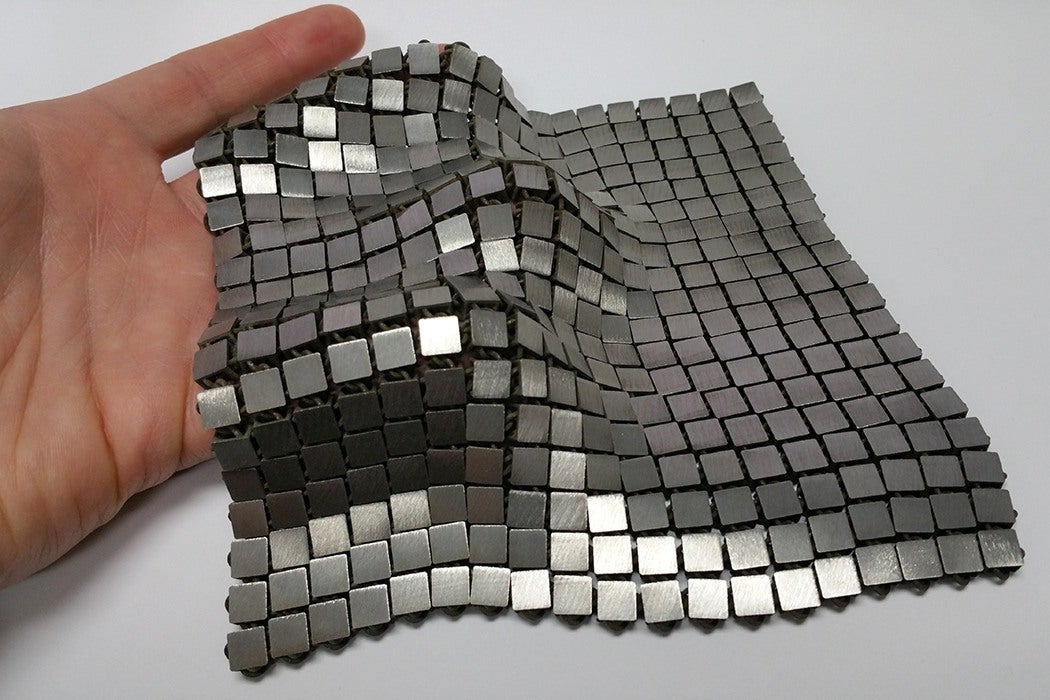NASA engineers are using 3-D printing to update a medieval favorite: chain mail. No zero gravity swordfights are planned, but the printed fabric might come in handy nevertheless. Space is a hazardous place.
One continuing problem for spacecraft is heat management; space is cold and the heat of reentry is extreme. The heat shields used to insulate now-decommissioned space shuttles were once a regular source of risk. The bottom shielding on the shuttles consisted of individual heat-resistant tiles made of glazed silicate; the top shields consisted of carbon-carbon panels. Damage or failure in one tile leaves a potentially catastrophic hole where heat could enter or even destroy the shuttle, and increases risk to adjacent tiles. The shields required expensive and time-consuming maintenance, and were vulnerable to debris. For example, when the Shuttle Columbia launched in 2003, a piece of insulating foam from an external fuel tank peeled off and struck the shuttle’s wing; during reentry 16 days later, this led to hot gases penetrating the interior and leading to the shuttle’s destruction.
Unfortunately for spacecraft, manned or unmanned, the risk of space impact is not limited to liftoff, and the problem is growing. There are natural risks, such as tiny meteorites, but the accumulation of garbage poses an increasing hazard. Space flight leaves a lot of junk behind, ranging from tiny objects, e.g. lost bolts, to large pieces including dead satellites and discarded rocket stages. Collisions between objects and breakup of debris on reentry create larger clouds of smaller objects. The controversial 2007 test of a Chinese anti-satellite weapon created its own orbital debris cloud. As debris accumulates, the risk of further debris from collisions increases.
Even very small pieces of debris can be dangerous since everything in orbit travels at enormous speed. In many cases a collision would be catastrophic. Debris can remain in orbit for a long time, and currently there is no real solution other than tracking debris carefully with Earth-based equipment. The U.S. maintains a publicly available catalog containing thousands of larger pieces of debris, but it is not complete. Larger pieces can be avoided if their positions are known, but small pieces remain especially dangerous.
The new chain mail material is experimental and final uses have not been determined. Whether or not it eventually protects against these particular hazards, the general design and manufacturing method have great potential. 3-D printed metallic fabrics are very flexible, and perhaps one day they might reduce the damage threat to static parts such as panels or tiles. Shields do exist that can protect against collisions with small objects, but they are heavy and expensive; 3-D printing is much cheaper. It may one day be possible to produce needed materials while on a space mission, giving crews much more flexibility to work.







